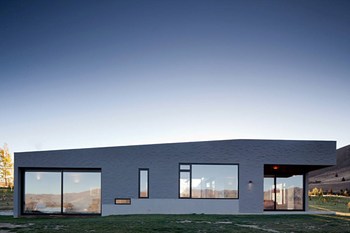Lake Hawea Courtyard House
Jun 01, 2012Glamuzina Paterson Architects
Samuel Hartnett
2012
Lake Hawea, South Island, New Zealand
250 sqm
Dunlop Builders
Mercury Bay Civil Design Ltd
Residential
Website URL
Wrong or incomplete information? Let us know!
Notes
The physical context was the driver of the formal arrangement of the house in Lake Hawea. It was decided that the overall shape should be a low singular form bunkered in the landscape that responds formally to the immediate context within which it is placed. The courtyard type allowed the building to address continuous enclosure and protection from the elements. The plan of the house was then able to negotiate both the interior courtyard and the exterior landscape. The idea of singular forms clad with simple materials, drove the material and formal qualities of the building early on in the design process.
The relationship of spaces became regulated by shifts between the staggered floor plates and corresponding shifts in the roof form. A key design element of the facade was the plinth. The plinth is expressed as lower recessed wall wrapping around the building connecting the mass to the ground and acting as an organisational tool for apertures. The two competing strategies of the plinth and the roof form enable a systematic approach with which the house is able to articulate the relationship of form to land.
We are influenced by the history and evolution of New Zealand architecture given our diverse landscapes The building responds to a series of historical precedents, including the language of the early settler buildings in Arrowtown and central Otago that utilize low slung, stone construction to deal with the extreme environment. Buildings such as the original Peregrine winery in Wanaka also used stone construction and long gables as a form of resistance to the environment.
It is through a contemporary interpretation of vernacular building form and materiality that the building design developed. In particular, the use of brick as a material became an early imperative in terms the development of the form and its place in the landscape. The use of brick created a concrete relationship with the site, and anchored it firmly to the ground, along with a textural palette that allowed for a constantly shifting interpretation of scale.















